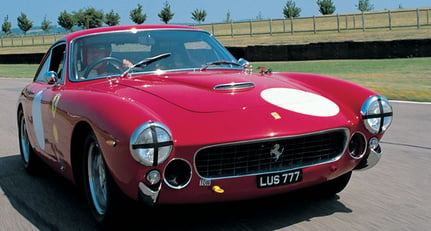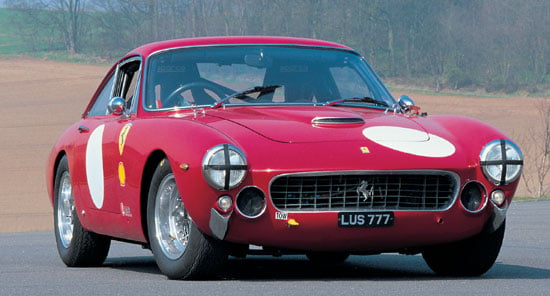
The following is an edited extract from Auto Italia magazine, September 2004. For access to the full feature, plus articles on the Alfa Romeo Giulietta 50th Anniversary, a travel feature on Modena, the new Fiat Barchetta and much more, see www.auto-italia.co.uk
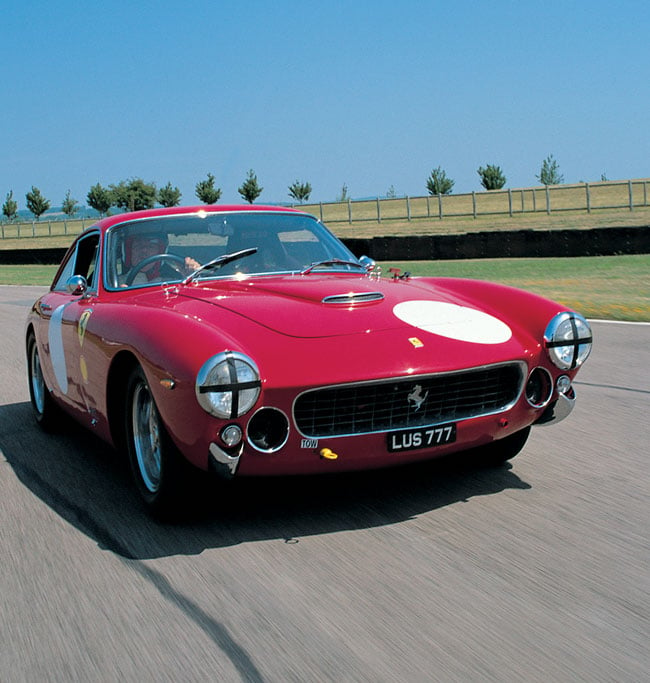 “Beauty is a consequential thing, a by-product of solving problems correctly.” So said Joseph Esherick, an American architect. Well if that’s the case, Enzo and Pininfarina were right on the button. What you see here is possibly the most beautiful car in the world. I’ll pause here to allow an argument to start. Anyway, what problem might they have had to solve along the way?
“Beauty is a consequential thing, a by-product of solving problems correctly.” So said Joseph Esherick, an American architect. Well if that’s the case, Enzo and Pininfarina were right on the button. What you see here is possibly the most beautiful car in the world. I’ll pause here to allow an argument to start. Anyway, what problem might they have had to solve along the way?
Back in 1962, disregarding F1, everything down Maranello way seemed pretty cosy. The 250 line of cars was proving not only a good money-spinner but also the variants were efficiently winning anything in motorsport that was going. The GTO was into the first year of its ‘win everything from long-distance track races to special-stage rallies’ lifecycle, the GT Short Wheelbase was just beginning to wind down after doing much the same and could still be relied upon to pick up the pieces, where necessary, if an Omologato failed. On the open roads of the world Enzo’s realisation that he needed to start production of a Ferrari for well-heeled customers who just wanted to drive places had paid dividends, especially as he also had the racing bills to pay. Having started the 250GT line in the mid 1950s he had capitalised on the world’s growing affluence and consolidated his factory’s increasingly strong position by introducing the GTE 2+2. By the time of our featured car’s arrival the GTE was well on the way to racking up nearly 1000 sales; a massive number by contemporary standards. Even customers with a desire for wind in their hair, or who just wanted to make sure that everyone saw who had just bought a Fazzaz, were more than satisfied by the California spiders.
Despite all this, back at base, Enzo was getting vibes. Feedback from agents suggested that despite the fact that he appeared to have all the corners covered, there was still room for another model to entice a further socio-economic niche through the showroom doors.
What he hadn’t got in his line-up was a luxury express; a Ferrari that was clearly part of the family but one that had a wow factor all of its own. One that had DRG, or down-the-road graphics, as a Vauxhall stylist once described a car you could pick out from the traffic 100 metres away.
So he got in touch with old mate Battista Pinin Farina – and the relationship really was very close. Between them they decided that a two-seater coupe based on the 2400mm Short Wheelbase chassis would be the perfect basis for the new project. As there was no intention that this would ever be a competition car, Pinin Farina could go to town on the styling and detailing. Even so, it was to be fitted with the rear suspension from the GTO so it would be no slouch when an owner decided he had to press on. Launched at the 1962 Paris Show, the newcomer came to be known as the Lusso.
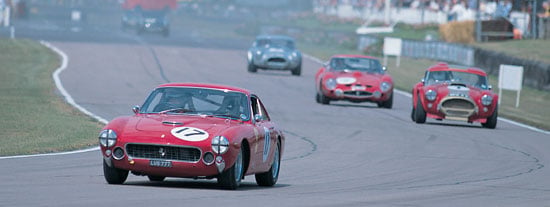
Few Lussos were used in combat on race tracks and special stages in the way our featured car has been. Those few that have, have given their owners a great deal of satisfaction. In 1964 the Swiss Charly Muller and Heini Walter had the former’s car uprated at the factory and then took part in the Tour de France, finishing 13th overall. Later, in ’64 and ’65, two Lussos were entered and run in the tough Targa Florio, the first finishing 14th.
Paul Osborn, owner of this car, chassis 5031GT, one of only 20 to 30 right-hand drive Lussos made, wanted to take part in some of today’s historic competitive events. Normally, when it came to Ferraris, these were the preserve of its sibling 250 GTOs and SWBs but the prices of both were way beyond the reach of normal members of the public. Paul was not to be dissuaded from taking part and at a price less than a tenth that of an Omologato but with essentially similar V12 and chassis, the Lusso made a lot of sense. It is also different and early reticence by organisers has now changed to a big welcome for the car.
Paul’s early experiences with 5031 included the Tour Auto and a rally in Australia as well as Historic GT races at Silverstone. All these provided some success and more importantly great experiences and a lot of fun. Eventually the rough and tumble of competition prompted a spell in the workshops to refresh the mechanicals and preserve those beautiful lines. One thing led to another, as they do, and la belle dame emerged some months later in the pristine condition you see here. Back in the fray, the first event for the revitalised car was the 2002 Goodwood Revival meeting where 5031 was honoured to have no less than Grand Prix and Le Mans winner Johnny Herbert as one of her pilots. To ready her for a return to the Revival in 2003 the opportunity was taken to send the car to suspension and handling expert, as well as ex-Autodelta works driver, Rhoddy Harvey-Bailey. The car was lowered all round and a thicker anti-roll bar added at the front. The result, according to Tony Dron who tried it on the same day that we were at Goodwood, is that it now handles so well it could probably do with a little more power.
So beauty is more than skin deep here and certainly not just a consequence of Pininfarina solving a problem correctly. No, it’s the happy result of both his and Maranello’s skills at their best.
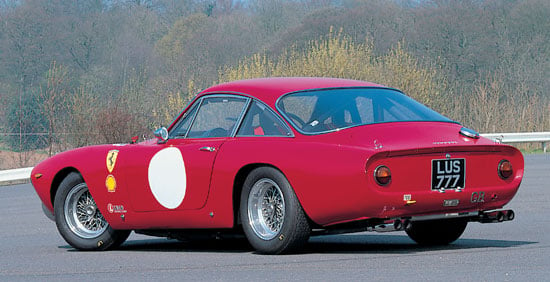
|
Words and Pictures courtesy of Peter Collins, Phil Ward and Auto Italia magazine.
See www.auto-italia.co.uk or call 01858 438817 for back issues and subscriptions. |
